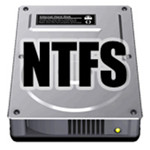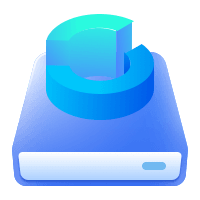Quick Navigation:
- What Is the NTFS File System?
- Common Causes for NTFS Data Loss
- NTFS File Recovery Through Data Recovery Software
- Conclusion
- FAQs About NTFS File Recovery
Losing data can be frustrating and scary, especially when you keep important things on your computer. The usual file system for Windows is NTFS, which stands for "New Technology File System." It is known for being reliable and having many advanced features.

However, even NTFS can lose data if it gets deleted by accident, the system crashes, or bad software is used. Learning to regain lost files on NTFS drives can save you time, stress, and even data loss. This guide covers the basics of NTFS file recovery, giving you information on the best ways to get back your lost data, the tools you'll need, and the best ways to use them.
Whether you accidentally deleted a few files or your whole hard drive got corrupted, this guide has everything you need to know to get your data back. Let's look at how to return your important info and keep it safe from getting lost again.
What Is the NTFS File System?
Microsoft's Windows operating systems use NTFS (New Technology File System) as their main file system. NTFS was first released in 1993. It is known for being very reliable and has many advanced features that make managing and protecting data easier.
One of its best features is that it can handle big file sizes and volumes, which makes it perfect for modern storage needs. Access Control Lists (ACLs) protect files and folders within NTFS, making sure that only people who are allowed to can see certain data. It also has built-in data recovery tools, like journaling, which keeps track of changes in a transaction log and helps protect against data corruption.
Disk quotas, file compression, encryption, and hard links are some other features that stand out. All of these help make data handling easy and safe. In general, NTFS is a strong and flexible file system that handles the complex needs of modern computing settings.
Common Causes for NTFS Data Loss
There are several reasons why NTFS data can be lost, such as:
⁉️ Formatting
You could lose all the saved data if you accidentally format NTFS partitions or drives. It could happen when the operating system is reinstalled, the disk is partitioned, or when you are trying to fix other disk problems.
🗑️ Accidental Deletion
Users can accidentally delete files or folders by pressing the delete key or Shift + Delete together, which skips the Recycle Bin and can delete important files right away.
❌ File System Damage
Many things, like disk errors, sudden power outages, hardware problems, or software bugs, can cause the NTFS file system to become corrupt. These problems can make the file system unstable or unreadable, making data lost or unavailable.
 Partition Table Damage
Partition Table Damage
The partition table keeps important details about a drive's sections. If this table gets damaged, NTFS files may not be able to be accessed, which can cause a lot of data loss. This can happen if the disk is not managed properly, malware hits it, or the drive is physically damaged.
🦠 Virus Attacks
NTFS drives can be infected with bad software that damages, encrypts, or deletes data. Viruses and other malware can attack and damage files, sometimes encrypting data for payment or making files unreadable. This kind of attack can be very bad, and to get back lost files, you usually need special recovery tools or help from a professional.
NTFS File Recovery Through Data Recovery Software
Data recovery tools like Do Your Data Recovery can be used to quickly get back lost or deleted files from an NTFS drive. Do Your Data Recovery is a strong program known for being easy to use and having strong repair features. To get back NTFS files with Do Your Data Recovery, do the following:
Step 1: Download and Install Do Your Data Recovery.
Visit the official Do Your Data Recovery page and get the software there. There are versions of Do Your Data Recovery for both Windows and macOS. Open the installer when the download is done and follow the on-screen directions to set up Do Your Data Recovery on your computer. Install it on a drive that isn't the one from which you need to get back data so that you don't lose the data you need to get back.
Do Your Data Recovery
- Recover permanently deleted files.
- Recover formatted, erased or inaccessible drive.
- Support to recover data from NTFS, HFS, APFS, ReFS, ExFAT, FAT32, etc.
Step 2: Launch The Do Your Data Recovery and Prepare For Recovery.
After the process is done, start the Do Your Data Recovery. You might have to give the program administrative rights to access the drives fully. Do Your Data Recovery will show a list of possible drives on the main screen. Pick the NTFS drive from which you want to retrieve your files.

Step 3: Scanning the Drive
Click the "Scan" button to start scanning. Do Your Data Recovery will start looking for recovered files on the chosen NTFS drive. The length of the scan depends on how big and healthy the drive is. You can get real-time updates from Do Your Data Recovery and pause or end the scan at any point.

Step 4: Review and Select Files for Recovery.
After the scan, Do Your Data Recovery will show you a list of files. You can see previews of files before you recover them to make sure you pick the right ones. You can filter the search by file size, type, or date, which will help you find specific files more quickly.

Check the boxes next to the files you want to get back. Choose a place where the restored files will go. It is important to pick a drive other than the one being retrieved so that you don't lose any data that can still be recovered. The recovery process will begin when you click the "Recover" button. Do Your Data Recovery will restore the chosen files where you told them to be.
Conclusion:
Do Your Data Recovery for NTFS file recovery is a simple and effective way to retrieve information you have lost or deleted. You can easily get back your important data by following the steps given: downloading and running the software, scanning the drive, and recovering the files you want.
Do Your Data Recovery is a good choice for new and experienced users because it has strong recovery algorithms and an easy-to-use interface. Don't forget to back up your info often so you don't lose it again. You can keep your data safe and get it back if you lose it if you use the right tools and follow the right procedures.
FAQs About NTFS File Recovery
1. What is the best NTFS file recovery software?
Here is the list of top 5 NTFS file recovery software for Windows or macOS:
- Do Your Data Recovery
- Magoshare Data Recovery
- Stellar Data Recovery
- Donemax Data Recovery
- iBeesoft Data Recovery
2. How to recover a formatted NTFS drive?
Do Your Data Recovery can help you unformat NTFS drive and get all lost data back:
- Download and install Do Your Data Recovery, open it.
- Select the NTFS drive to start data recovery.
- Click on Scan button to deeply scan the formatted NTFS drive.
- Preview and recover lost files after scanning.
3. How to recover lost data from NTFS hard drive on Mac?
Do Your Data Recovery for Mac is a reliable NTFS file recovery software for Mac. It can help you deeply scan the NTFS drive and recover all lost data without any limitation.
- Download and install Do Your Data Recovery for Mac, open it from Launchpad.
- Select the NTFS hard drive to scan.
- Click on Scan button.
- Preview and recover lost files.